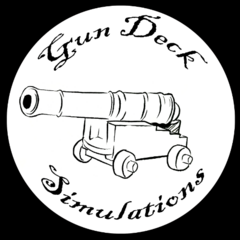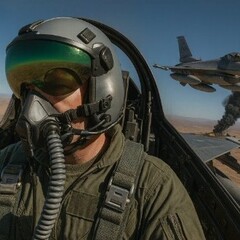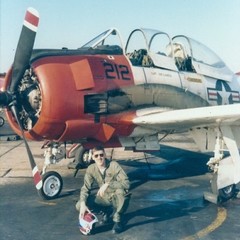-
Posts
382 -
Joined
-
Last visited
About Yoda967
- Birthday 07/13/1961
Personal Information
-
Flight Simulators
DCS (obviously), MSFS
-
Location
London, UK
Recent Profile Visitors
5496 profile views
-
It's in there. I haven't looked closely yet, but RAF Northolt is there.
-
@MiGCap1, any landing you can walk away from, I guess.
-
Ah! Thanks. It surprises me to see the procedure in the cockpit overview. I was looking for it under Weapons & Stores: https://f4.manuals.heatblur.se/stores/overview.html Thanks!!
-
Unless I missed something, there doesn't seem to be anything in the manual yet about how to jettison the drop tanks. Had to go to the RW F-4E manual to figure it out. Having a blast getting to know the Brick. Thanks, Heatblur, and everyone who's pitched in with their RW expertise!
-
Yoda967 changed their profile photo
-

LOW SUCTION/artificial horizon drift (EDIT: tracks added by Aernov)
Yoda967 replied to Jakey-Poo's topic in Bugs and Problems
You're right...and my apologies. I misunderstood what you wrote. -

LOW SUCTION/artificial horizon drift (EDIT: tracks added by Aernov)
Yoda967 replied to Jakey-Poo's topic in Bugs and Problems
I know you're correct on your first point. I've read several books by Spitfire pilots who mention the artificial horizon tumbling during a dog fight. Over in the Spitfire forum, it's been confirmed that gyro drift is modeled. Gyros do indeed drift during maneuvers, but they don't restore their position after the aircraft returns to level flight. That's the purpose of the adjustment knob on the DG...you check it periodically for agreement with the magnetic compass and adjust the DG to match. -
@RyanR, I think movies and television, in their drive to deliver cinematic spectacle, have done us a disservice. The first episode of "Masters of the Air" shows the wing of B-17s launching into cloudy skies and trying to form up in full IFR. They just weren't equipped for that...even under purely visual conditions, it took precise flying, a good stopwatch, and an active participation by the entire crew to watch for other aircraft. Rhubarb missions and later Rodeos were expected to be flown below any overcast so that pilots could navigate visually by dead reckoning. The was a system in Britain called "Darky" that provided a radio beam for bombers returning in darkness to follow, but it included the use of light beacons and procedural voice control as the bombers approached their landing fields.
-
It's completely absent in DCS on the WWII maps because it wasn't available in the WWII aircraft currently in DCS. There is no way to see GPS or VORs or ILSs in the Spitfire cockpit. Or the P-47. Or the Mustang. Because it simply didn't exist in the 1940s. If you got lost, you called on the homing frequency assigned, and you hoped somebody heard you. (What does work is there because DCS is a sandbox, so it benefits the aircraft that can use it.) I get it. You're used to the tools at your disposal in modern aircraft. Me, too. Dead reckoning is hard work. That's just the way it was. It takes practice, but it's really satisfying when you can hand-fly an hour and forty-five minute round-robin from Detling or High Halden across the channel and back using only a compass and your eyeballs. I totally recommend it!
-
Ryan, The state of the technology at the time was that radio navigation required longer range and therefore lower frequencies...thus larger, heavier radios. Radio navigation was mainly handled from the ground in the early 1940s, except for larger aircraft. Chuck's guide for the Mosquito gives a detailed explanation of how this is simulated in the DCS Mosquito. Fighters, though, relied on manned ground stations which could be called on a voice channel. The operator on the ground would reply with a request for a long transmission from the aircraft, and use direction finding to determine the bearing. With that determined, they could direct the aicraft to fly a heading until seeing the airfield, or they could coordinate with other D/F facilities by landline and then provide a vector. Edit: Aircraft would be assigned a "homing" frequency, which would be tuned by ground crews before each mission into one of the four available for selection in the cockpit. A deep dive into RAF procedures for this (which also applied to the USAAF) show them to be pretty elaborate and they constantly worked to improve. Otherwise, a fighter pilot had to rely on visual ground references, and I recommend reading Geoffrey Wellum's book "First Light" which contains a harrowing experience he had in full IFR while in a Spitfire.
-
@fjacobsen, "Aim and hoot the M4" is the best typo ever.
-
It's hard to believe that that Spitfire spent 45+ years buried in the sand on a French beach.
-
Seeing a Duxford airshow was high on my list of things to do when I took my current work assignment in London. That first Battle of Britain airshow in September '18 was mind-blowing...there were 21 Spits in formation, plus a Mk I doing aerobatics at the same time. I stood by the fence and jumped up and down with excitement, which still gives my wife the giggles. I'm glad you got to experience Duxford too, Jeffrey. It's a special place.
-
Authentikit is reportedly working with Flying Iron Simulations on an F6F throttle.
-
The jet defaults to Zulu time on the HUD and local time on the IFEI (which also displays fuel state and engine status). To set local time on the HUD, go to the HSI on one of your MFDs or the AMPCD. Press PB17 (lower row of push buttons, second from the right) to box TIMEUFC. On the Up Front Controller press the bottom OSB to select LTOD with a colon. Now, when the aircraft is airborne, the HUD will display local time. On the IFEI, local time is the default setting, but you can toggle between local and Zulu time by pressing the "zone" button.







